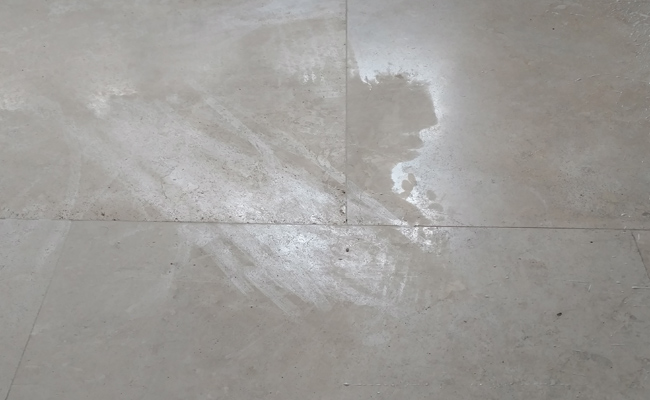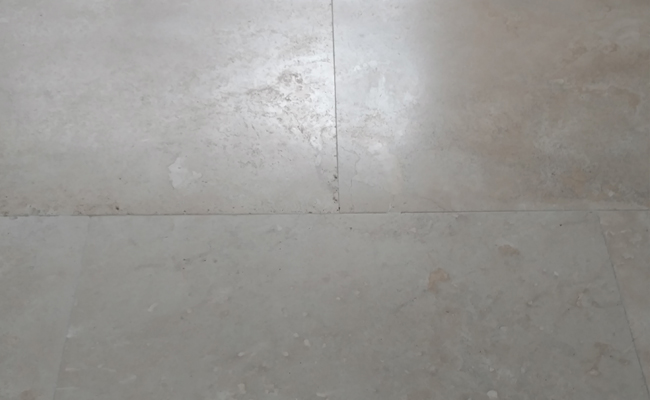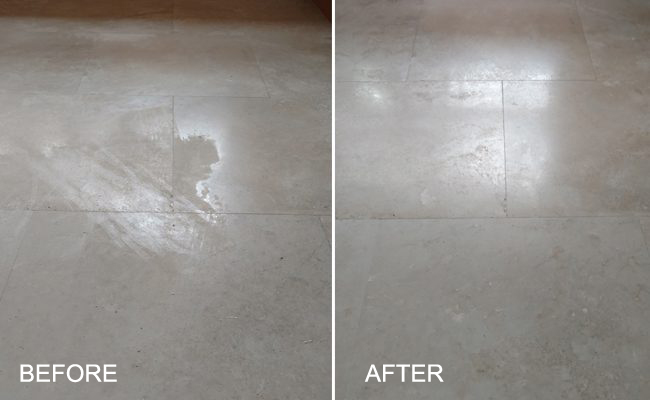
This is the deep edge damage that compelled the customer to call us for travertine restoration.

Here is the same travertine floor, with the etching removed.

The left image shows BEFORE and the right image shows AFTER our travertine etch removal.
Etch removal, honing
Etching Distorts Smooth Honed Finish
This honed travertine was in very poor condition after drink spills and improper cleaners caused etching. Etching is a chemical reaction between acidic substances and calcium that changes the appearance and texture of the surface of the stone. The homeowners had tried and failed to clean the etches and wondered if restoration were even possible. They called Set In Stone, hoping that we could restore the floor to its former elegance. We explained that no amount of cleaning can remove etches, but that our professional honing process could.
Our Travertine Restoration Process
First, we masked and protected surrounding areas. Then, we honed the travertine to remove the etches and reveal the undamaged stone underneath. With our travertine floor restoration processes, this floor now looks as if it were just installed.
For more information about travertine restoration, such as etch removal, lippage removal (leveling uneven tiles), crack and chip repair, stain removal, sealing, filling naturally-occurring travertine holes, as well as honed, slightly polished, or high-gloss polished finish, watch one or more of these short videos: Floating Travertine, Travertine Strip, Hone, and Repolish, and Travertine Repair, Restoration, and Polishing or visit our Travertine Services page.



